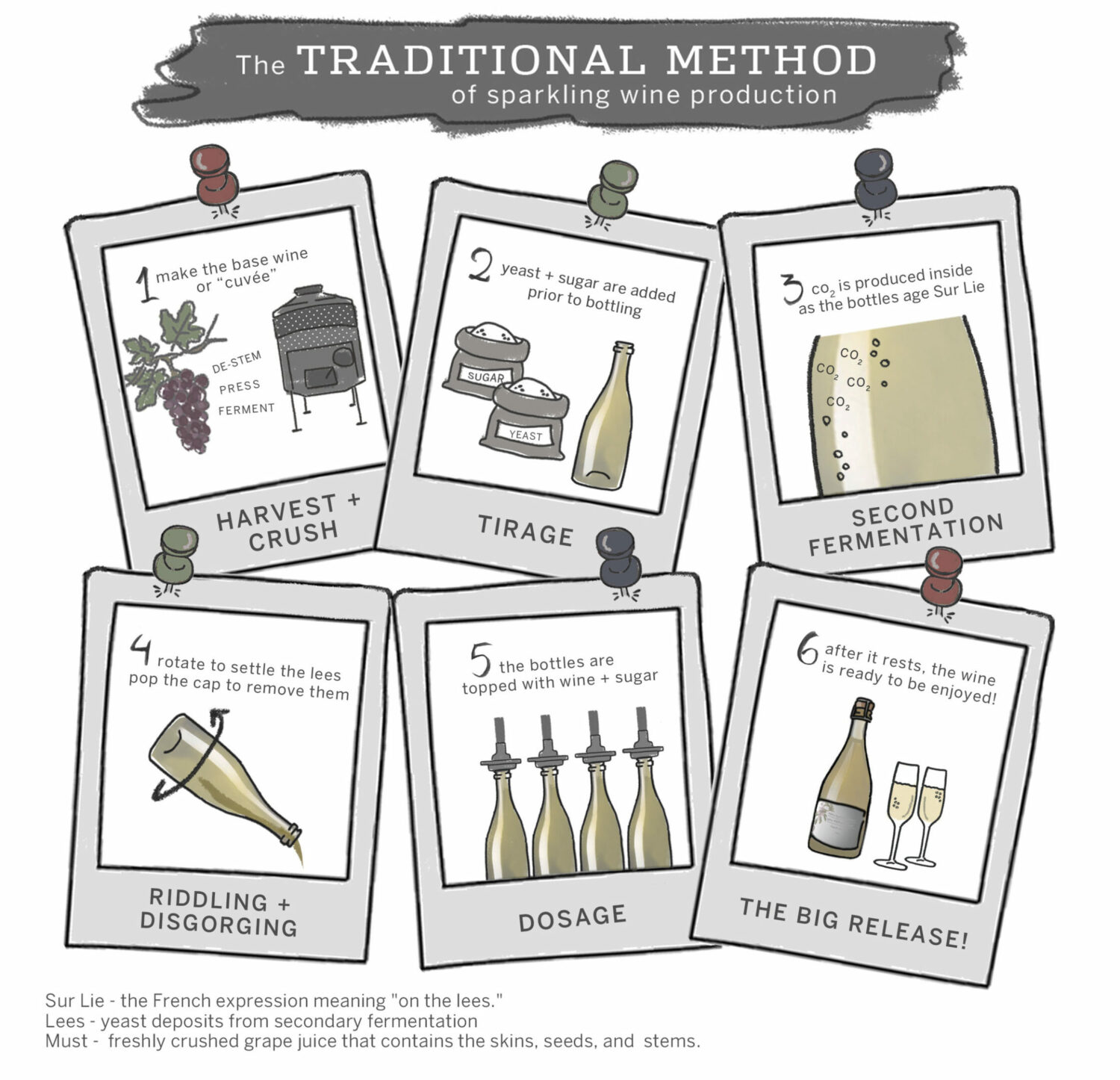The Traditional Method

The traditional method, or “méthode traditionnelle” in French, is used to produce sparkling wine, with secondary fermentation occurring in the bottle. While famously used in champagne production, this method has been adopted by winemakers worldwide and can be used to make sparkling wine from many wine varietals. Our Anderson Valley winemaker Stéphane Vivier crafts Long Meadow Ranch Blanc de Noirs and Sparkling Rosé using this Traditional Method.
HARVEST + CRUSH
The base wine is essentially a still wine. Grapes are harvested at the preferred level of sugar and acidity, destemmed, pressed and fermented. Base wines are often combined to produce a “cuvée” which will be the final sparkling wine blend.
TIRAGE
The French term “tirage” refers to filling the blended wines into bottles and preparing them for a secondary alcoholic fermentation. To initiate secondary fermentation, the winemaker prepares a “liqueur de tirage,” the cuveé mixed with a small quantity of sugar and yeast. This mixture is bottled and sealed with a cap.
SECONDARY FERMENTATION + LEES AGING
The secondary fermentation, or “bottle fermentation,” is the process that makes sparkling wine bubbly. The yeast consumes the sugar, yielding CO2 and additional alcohol. The trapped CO2 creates a natural carbonation. When the fermentation is complete the byproduct sediment is called the “lees.”
After the secondary fermentation is complete, sparkling wines are aged “Sur Lie” which translates to ”on the lees.” Depending on the winemaking style, lees aging can occur for a few months or for several years. Wines aged for a longer period of time tend to express stronger bread-like flavors in the glass.
RIDDLING + DISGORGING
Once the wine has had enough contact with the lees, the lees get removed from the bottle in a process called disgorging. To prepare the sediment for extraction, the bottles must first be riddled. During the riddling process, bottles are stored with the neck angled down and given a slight turn every day for weeks, to collect the lees sediment toward the cap. To extract the lees, the neck of the bottle is submerged in an ice-cold bath. Once frozen, the cap is removed and the frozen sediment shoots right out.
DOSAGE
Shortly after disgorging, and just before the wine is bottled, winemakers have the opportunity to influence the final wine by adding still wine and/or sugar to the bottles, a step called “Dosage.” Winemakers typically add a solution of base wine, sugar and small amounts of sulfur dioxide for preservation.
THE BIG RELEASE
After dosage, corks and cages are fitted to the bottles. Prior to their big release, wines are mixed and aged 4 to 6 months to regain composure after disgorging. When the winemaker gives a thumbs up, the finished wines are released into the world and the bubbles can finally be enjoyed. Cheers!
